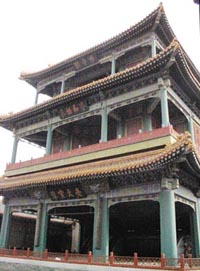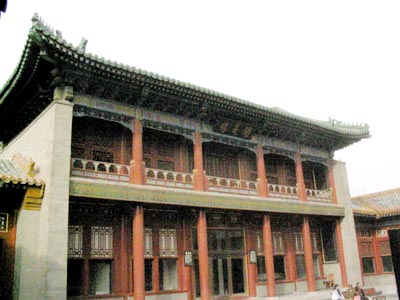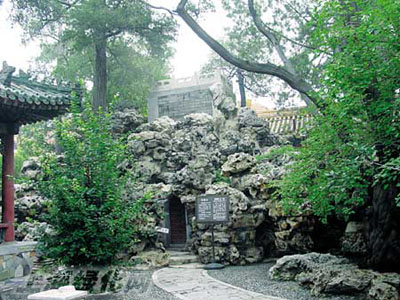The Qianlong Garden in the northeastern section of the Forbidden
City will receive a US$12 million face-lift by the Palace Museum, administrative
organ of the Forbidden City, and the New York-based World Monuments
Fund, according to an agreement signed in the palace yesterday by
the two parties
Experts from the Palace Museum, the Washington-based Smithsonian
Institute and a few other private US institutes will be involved in
the project, Bonnie Burnham, president of the foundation, told
China Daily.
A European Rococo mural depicting Qing royal concubines is one of
the numerous treasures kept in the 230-year-old, 6,400-square-meter
garden, which will be opened to the public in 2016.

"I was born in Beijing more than 80 years ago.
After the Forbidden City opened to the public in 1925, my family
and I visited it many times, but I have never been to this part, so
it would be an honor for me to help show the garden to the public,"
Burnham said.
The Qianlong Garden, which Emperor Qianlong (reign 1736-1795)
built for his retirement in the early years of his reign, was
completed in 1776 and cost 1.4 million taels of silver to construct
(approximately RMB280 million today), according to Li Ji, executive
deputy director of the Palace Museum.
It has remained virtually untouched since then. Meanwhile, other
parts of the Forbidden City underwent continuous changes throughout
the Qing Dynasty (1644-1911).
Besides the corridors, artificial hills and bridges placed
artistically among the buildings, the Qianlong Garden is unique in
terms of the interior décor of its buildings, according to
Burnham.
The designers used the best traditional material and techniques,
together with Tromp l'Oeil paintings and perspective techniques
from the West, to create a rich and elegant imperial interior
space, exemplifying the cultural differences between the East and
the West.




(China Daily March 2, 2006)